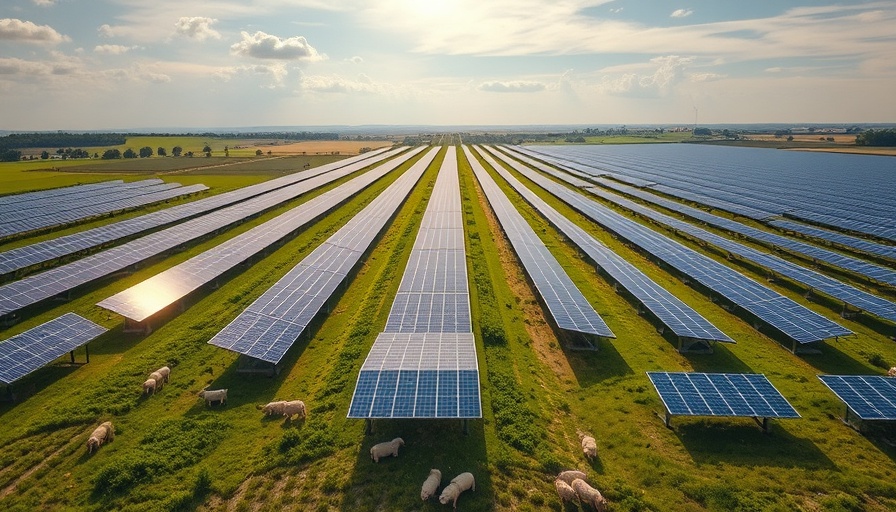
Innovative Agrivoltaics: A New Farming Paradigm
In a groundbreaking approach, agrivoltaics is becoming a pivotal part of sustainable agriculture and energy production. The exciting new project at Crystal Hill Solar in Halifax County, Virginia, showcases how solar energy can coexist with agriculture, resulting in both ecological benefits and community growth.
The Harmony of Solar and Agriculture
The 65-megawatt solar farm at Crystal Hill not only powers approximately 10,800 homes but also houses lambs and an apiary with 500,000 bees. This unique integration allows lambs to graze beneath solar panels, reducing the need for mowing and maintaining soil health, while the honey produced benefits local charities and schools.
Future of Sustainable Farming
The research conducted at the site will explore the relationship between these pollinators and vegetation. Experts will analyze the types of pollen bees collect and observe changes in plant growth. Such insights are essential for optimizing agrivoltaic models in similar projects nationwide, paving the way for sustainable farming practices that enhance both crop yield and energy efficiency.
Challenges and Opportunities Ahead
While the success of the Crystal Hill Solar project demonstrates the promise of agrivoltaics, obstacles remain—especially concerning federal grant support for new ventures following recent funding freezes. Advocates are working to encourage policy changes that support more of these integrated systems, emphasizing their pivotal role in addressing climate change, enhancing food production, and promoting biodiversity.
In California, homeowners and potential buyers can draw inspiration from such innovative projects, considering how similar agricultural and renewable energy practices could be adapted in urban and suburban landscapes. This evolution not only contributes to a healthier community but also enhances property values through sustainable practices.
As discussions around energy efficiency and sustainable living become more widespread in Californian households, learning about a successful agrivoltaic model could motivate homeowners to explore eco-friendly alternatives on their properties. The blend of solar power, agriculture, and community initiatives demonstrates the future of resource-sharing practices while underlining the importance of maintaining strong connections to our environment.
 Add Row
Add Row  Add
Add 




Write A Comment